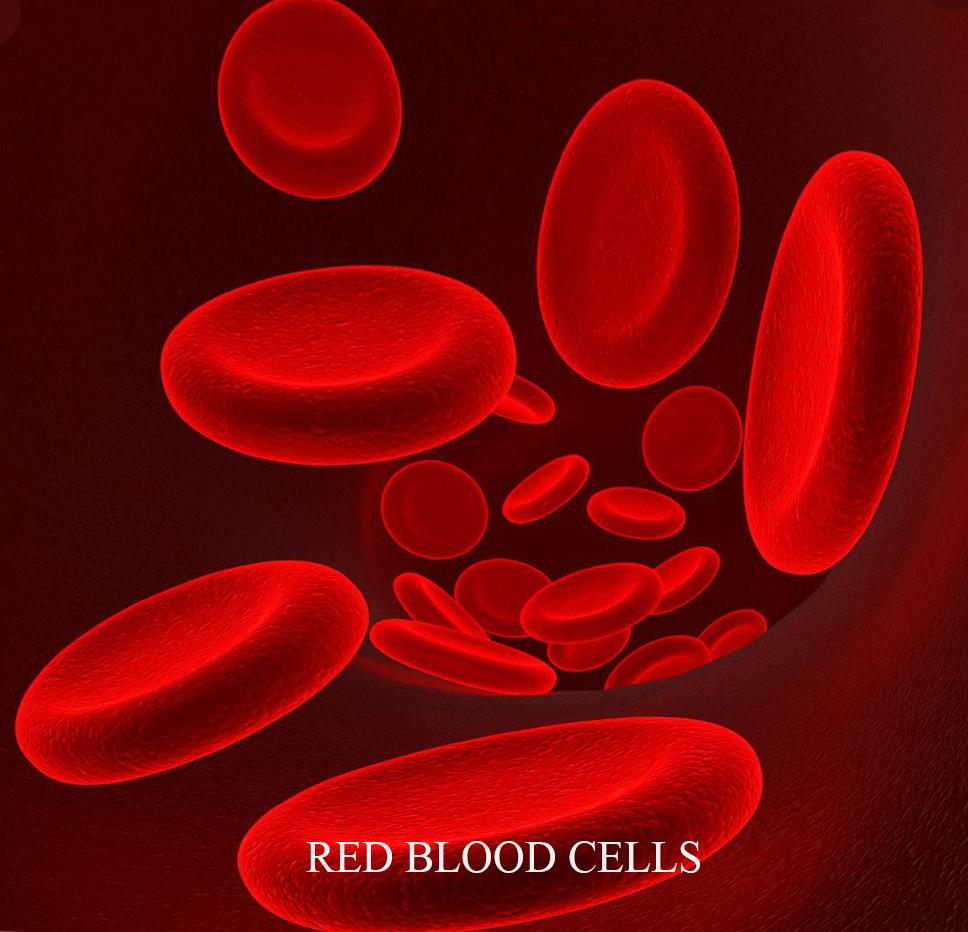
The shape of red blood cells is
(a)Disc
(b)Amoeboid
(c)Cuboid
(d)Spherical
Answer
546.6k+ views
Hint The red blood cells in the human body have a particular shape for carrying out their primary functions of oxygen transport. The change in the shape is indicative of the maturity of the cell or a stress affecting the cells.
Complete answer:
- Human red blood cells (RBCs), or erythrocytes, are disc-shaped under physiological conditions. More specifically, they are biconcave in shape. The shape of these cells helps in efficient transport through narrow blood vessels.
- RBCs are the primary cellular component of blood, which is a connective tissue in the human body required for important functions such as oxygen and hormone transport.
- The typical human RBC is much smaller than other somatic cells. It has a diameter of 6 - 8 diameters and a thickness of 2 micrometers.
- A change in the shape of the RBC will make it inefficient in oxygen transport and gas exchange. This is observed in spherocytic anemia where the cells are spherical and sickle-cell anemia where the cells are sickle-shaped.
Additional Information:
- The RBCs contain hemoglobin molecules that carry out the oxygen transport. These molecules turn bright red on binding with oxygen.
- RBCs are considered as cells but do not contain a nucleus, nuclear DNA, and other organelles such as the endoplasmic reticulum and mitochondria. Due to this, the cells do not undergo fission or carry out aerobic respiration as they only carry the oxygen.
- Hemoglobin transports almost 98 % of oxygen through the body. The rest is transported as dissolved molecules in the plasma.

So, the correct answer is ‘disc’.
Note: - Adult healthy humans contain approximately 20-30 trillion RBCs at any given time.
- The shape of the RBC is also known as ‘discocyte’.
- RBCs are formed in the red bone marrow of bones and the old and damaged cells are eliminated or recycled by the spleen and the liver.
Complete answer:
- Human red blood cells (RBCs), or erythrocytes, are disc-shaped under physiological conditions. More specifically, they are biconcave in shape. The shape of these cells helps in efficient transport through narrow blood vessels.
- RBCs are the primary cellular component of blood, which is a connective tissue in the human body required for important functions such as oxygen and hormone transport.
- The typical human RBC is much smaller than other somatic cells. It has a diameter of 6 - 8 diameters and a thickness of 2 micrometers.
- A change in the shape of the RBC will make it inefficient in oxygen transport and gas exchange. This is observed in spherocytic anemia where the cells are spherical and sickle-cell anemia where the cells are sickle-shaped.
Additional Information:
- The RBCs contain hemoglobin molecules that carry out the oxygen transport. These molecules turn bright red on binding with oxygen.
- RBCs are considered as cells but do not contain a nucleus, nuclear DNA, and other organelles such as the endoplasmic reticulum and mitochondria. Due to this, the cells do not undergo fission or carry out aerobic respiration as they only carry the oxygen.
- Hemoglobin transports almost 98 % of oxygen through the body. The rest is transported as dissolved molecules in the plasma.

So, the correct answer is ‘disc’.
Note: - Adult healthy humans contain approximately 20-30 trillion RBCs at any given time.
- The shape of the RBC is also known as ‘discocyte’.
- RBCs are formed in the red bone marrow of bones and the old and damaged cells are eliminated or recycled by the spleen and the liver.
Recently Updated Pages
Master Class 11 Social Science: Engaging Questions & Answers for Success

Master Class 11 Physics: Engaging Questions & Answers for Success

Master Class 11 Maths: Engaging Questions & Answers for Success

Master Class 11 Economics: Engaging Questions & Answers for Success

Master Class 11 Computer Science: Engaging Questions & Answers for Success

Master Class 11 Chemistry: Engaging Questions & Answers for Success

Trending doubts
What is meant by exothermic and endothermic reactions class 11 chemistry CBSE

10 examples of friction in our daily life

One Metric ton is equal to kg A 10000 B 1000 C 100 class 11 physics CBSE

Difference Between Prokaryotic Cells and Eukaryotic Cells

1 Quintal is equal to a 110 kg b 10 kg c 100kg d 1000 class 11 physics CBSE

Draw a diagram of nephron and explain its structur class 11 biology CBSE




